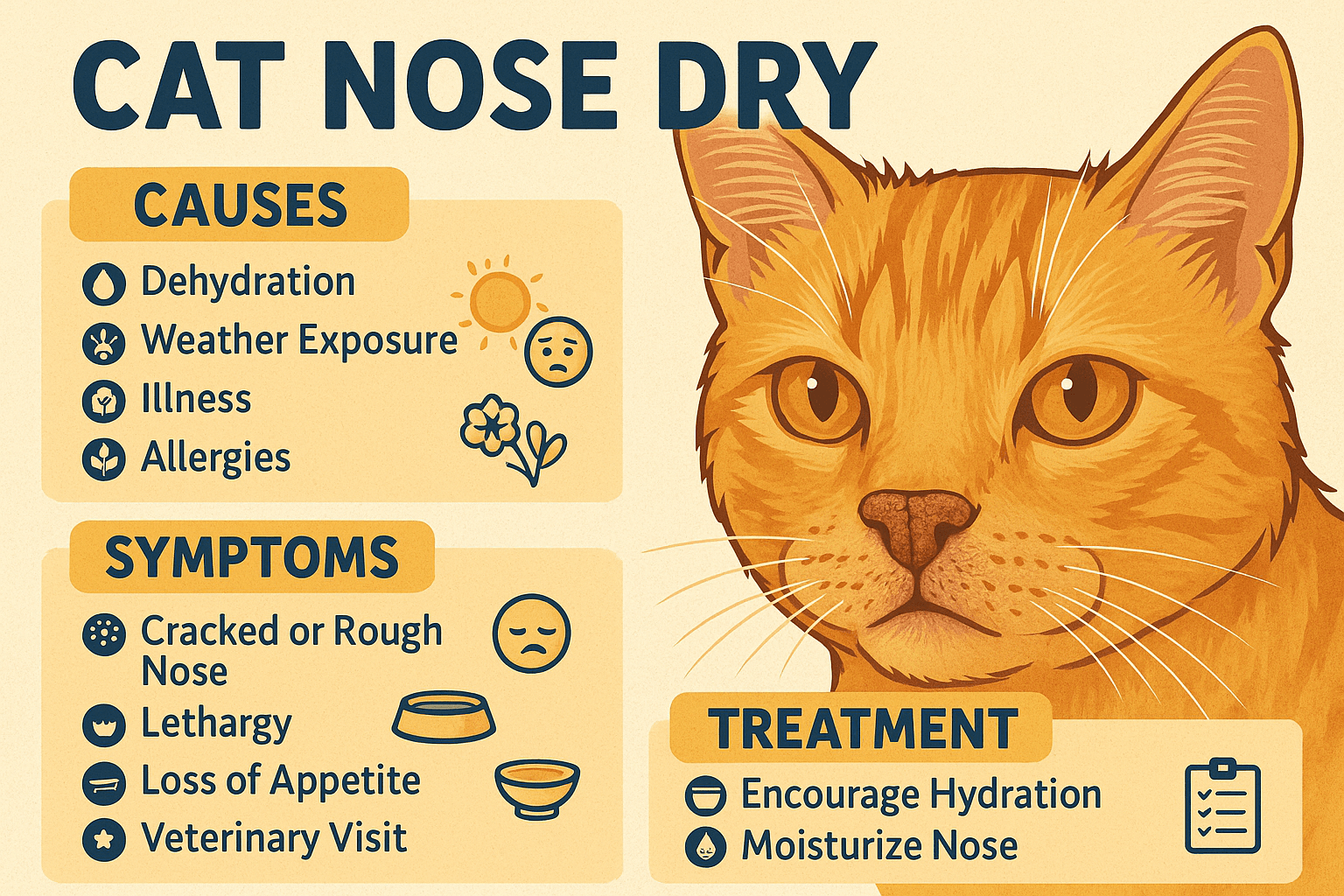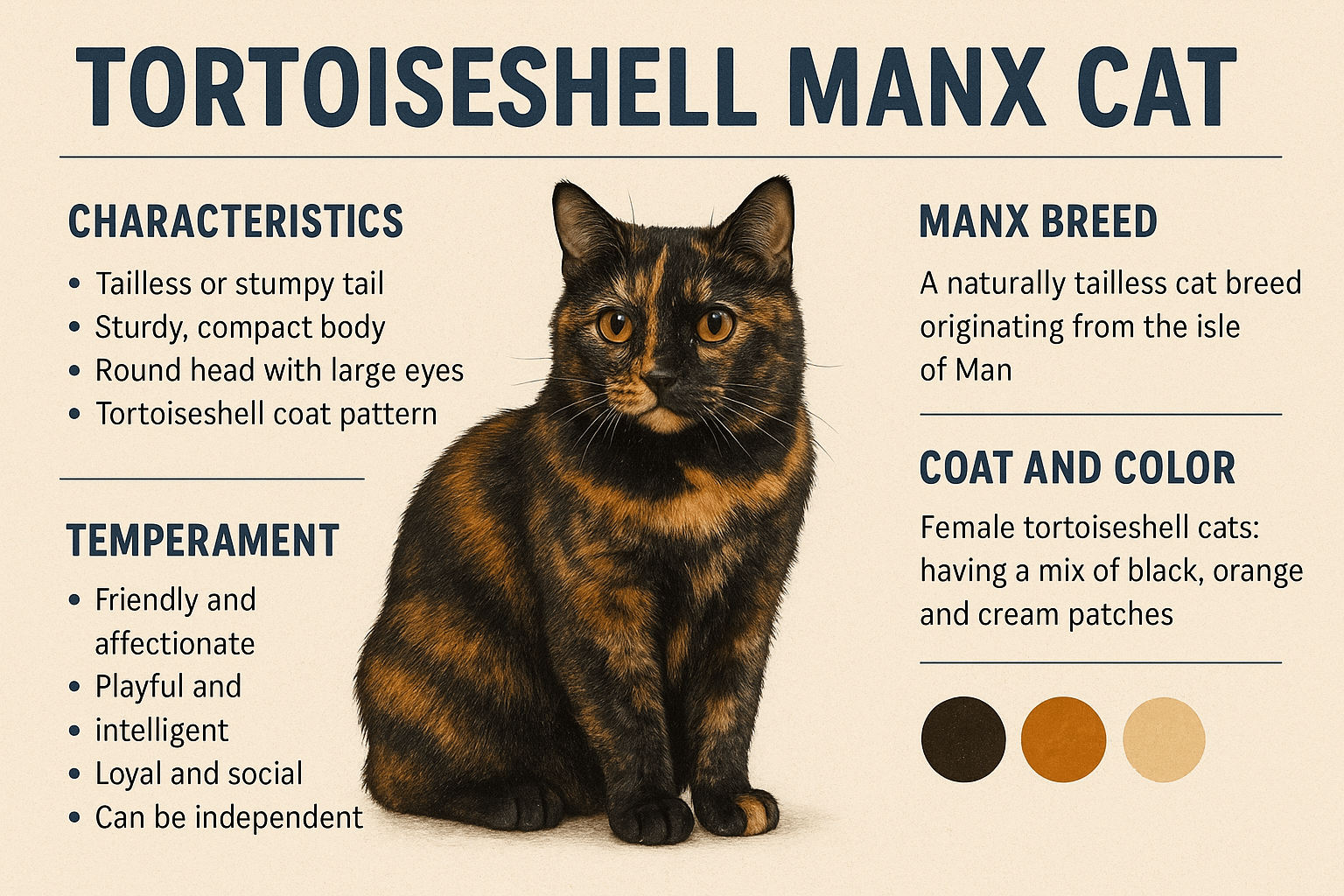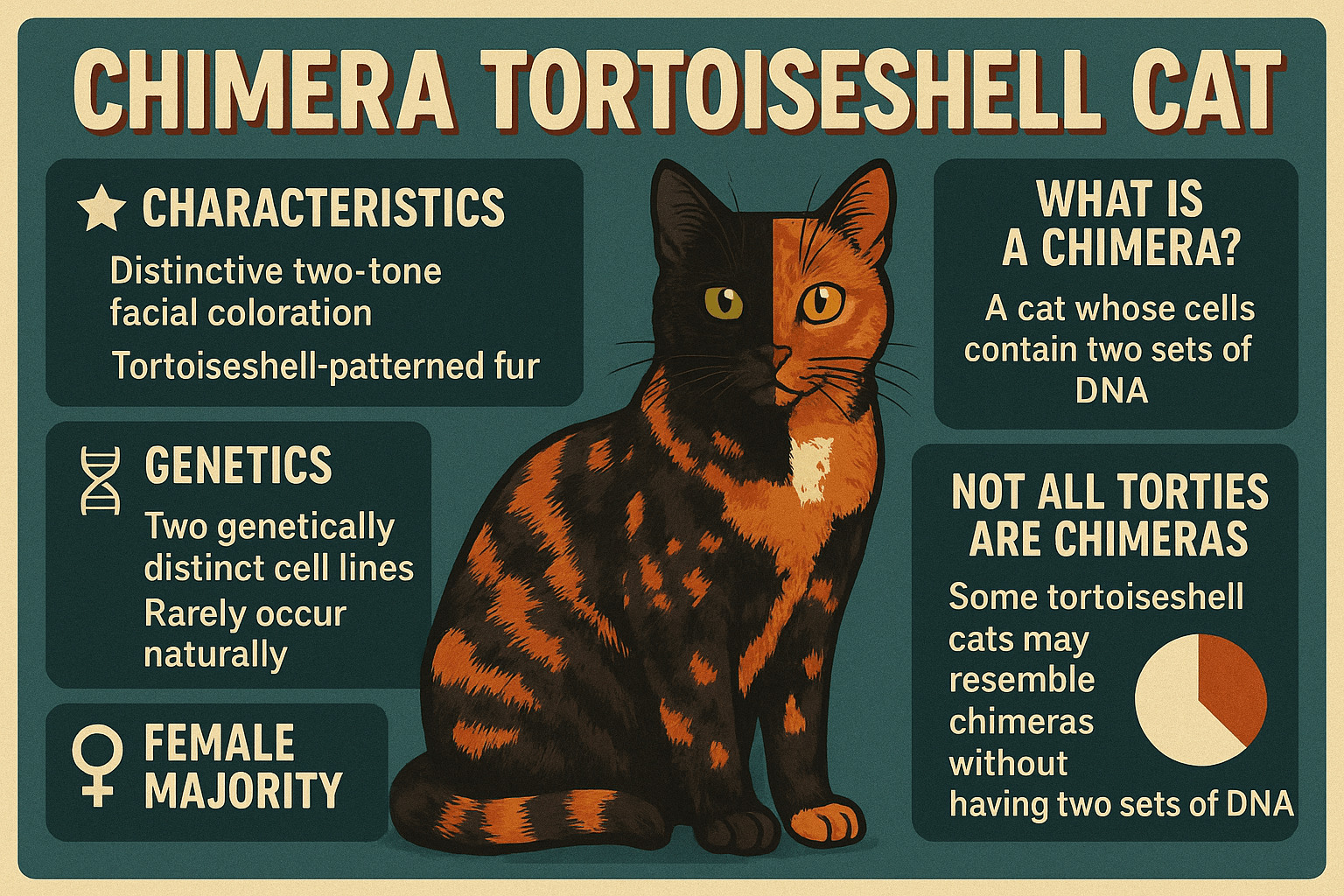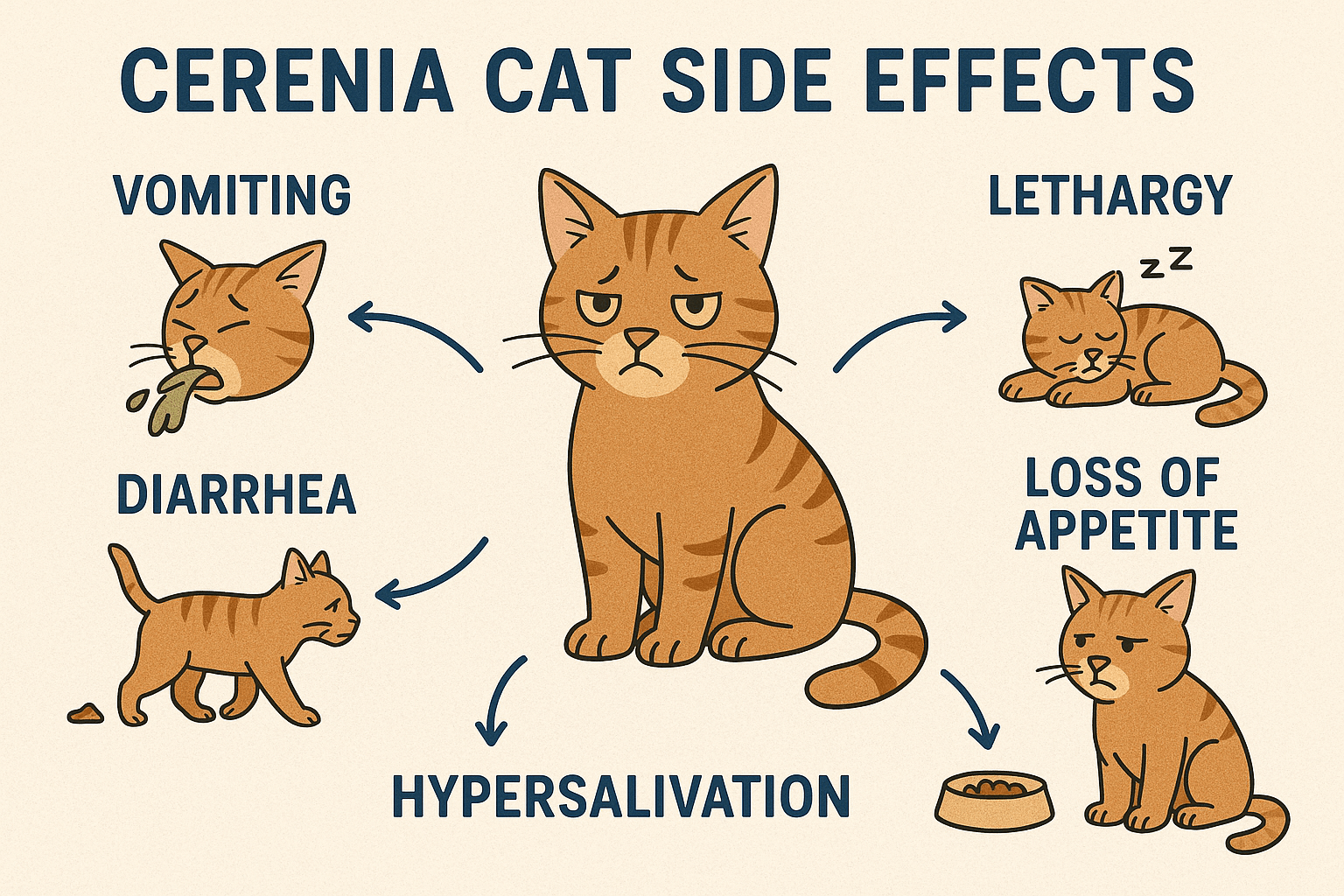Why Is My Cats Nose Dry? Understanding the Causes and Solutions
A cat’s nose is often seen as a barometer of their health, with many pet owners assuming a wet nose means a happy, healthy feline. But what happens when your cat’s nose feels dry? Does it automatically signal a problem, or is it simply a normal variation? A dry cat nose can stem from a variety of factors, ranging from environmental conditions to underlying health issues. In this blog post, we’ll explore the reasons behind a dry cat nose, how to identify potential concerns, and what you can do to keep your furry friend comfortable and thriving.
Common Reasons for a Dry Cat Nose
A dry cat nose isn’t always a cause for alarm—it can result from everyday factors that are easy to address. Here are some common explanations for why your cat’s nose might feel dry.
Dehydration:
Cats that don’t drink enough water may experience dryness in their nose and other areas. Ensure fresh water is always available.Environmental Factors:
Dry air, especially during winter months or in homes with air conditioning, can lead to a dry nose. Humidifiers can help combat this issue.Sleeping Habits:
Cats often sleep for long periods, and during rest, their noses may dry out temporarily without causing harm.Age-Related Changes:
Older cats may naturally have drier skin and noses due to reduced oil production as they age.Allergies or Irritants:
Exposure to allergens like dust, pollen, or cleaning products can irritate a cat’s nasal area, leading to dryness.
Understanding these causes helps you determine whether your cat’s dry nose is harmless or requires further attention.
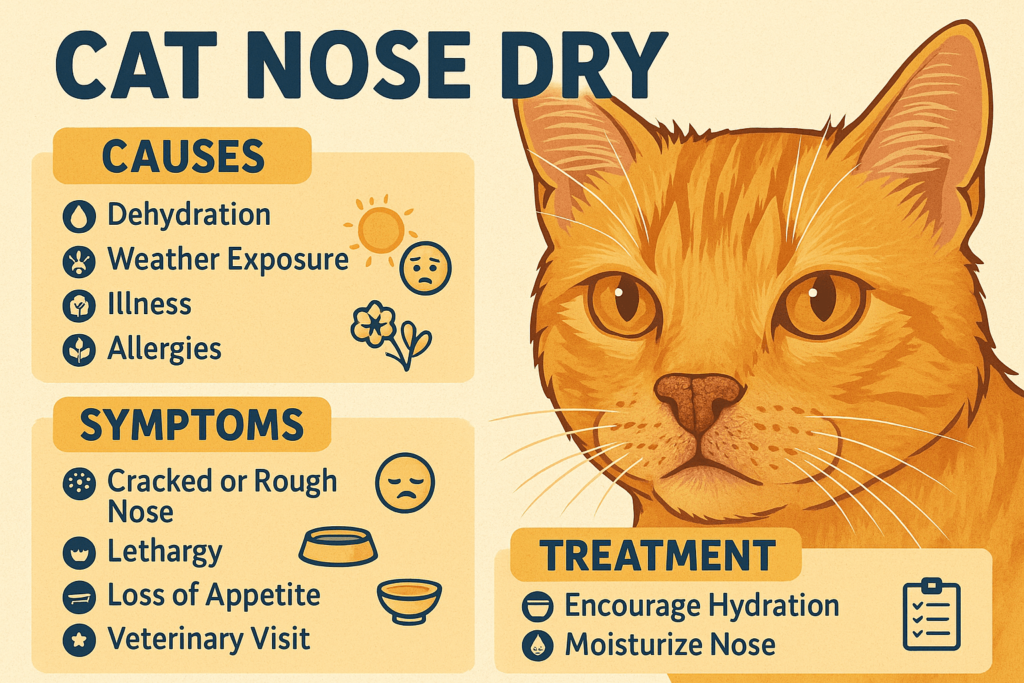
Signs That a Dry Cat Nose Might Indicate a Health Issue
While a dry nose alone doesn’t necessarily mean your cat is sick, certain accompanying symptoms could signal an underlying health concern. Watch for these red flags that warrant a visit to the vet.
Cracking or Peeling Skin:
If your cat’s nose appears cracked, flaky, or irritated, it could indicate dermatitis or another skin condition.Discharge or Bleeding:
Any unusual discharge, scabbing, or bleeding from the nose should be evaluated by a veterinarian.Lethargy or Loss of Appetite:
A dry nose combined with decreased energy levels or refusal to eat may point to a systemic illness.Sneezing or Nasal Congestion:
Persistent sneezing, wheezing, or difficulty breathing alongside a dry nose could suggest respiratory issues.Behavioral Changes:
If your cat seems unusually irritable, withdrawn, or disinterested in activities, it may indicate discomfort or pain.
These signs, when paired with a dry nose, serve as important indicators that your cat may need professional care.
Check this guide 👉Understanding Cat Nose Cancer: Best 7 Expert Tips!
Check this guide 👉Black Spots on Cat Nose: Best 7 Expert Tips!
Check this guide 👉Understanding Cat Nose Fungus: Best 7 Health Tips!
Normal Causes of Dry Cat Noses | Potential Health Concerns |
|---|---|
Temporary dehydration | Upper respiratory infections |
Sleeping for extended periods | Allergic reactions or irritations |
Low humidity in the environment | Autoimmune disorders affecting skin |
Age-related changes | Fungal or bacterial infections |
Exposure to sun or heat | Trauma or injury to the nasal area |
How to Care for Your Cat’s Dry Nose at Home
If your cat’s dry nose isn’t linked to a serious health issue, there are simple steps you can take to soothe and moisturize their nasal area.
Provide Fresh Water:
Encourage hydration by offering clean, fresh water daily. Consider using a cat water fountain to entice picky drinkers.Use a Humidifier:
Adding moisture to the air can prevent dryness not just in your cat’s nose but also in their skin and coat.Avoid Harsh Chemicals:
Clean your home with pet-safe products to avoid irritating your cat’s sensitive nasal passages.Apply Vet-Approved Ointments:
For minor dryness, ask your vet about safe moisturizers designed specifically for cats’ sensitive skin.Monitor Their Environment:
Keep your cat indoors during extreme weather conditions to protect them from excessive sun or cold winds.
By taking these proactive measures, you can help maintain your cat’s overall comfort and well-being.
When to Consult a Veterinarian About Your Cat’s Nose
While occasional dryness is normal, persistent or severe symptoms should never be ignored. Knowing when to seek veterinary advice ensures your cat receives timely care.
Persistent Dryness Over Days:
If your cat’s nose remains dry for more than a few days despite attempts to hydrate them, consult your vet.Visible Sores or Lesions:
Open wounds, scabs, or unusual marks on the nose require professional evaluation to rule out infections or allergies.Unexplained Weight Loss:
Sudden weight loss accompanied by a dry nose could indicate an underlying medical condition.Frequent Sneezing or Coughing:
These respiratory symptoms paired with a dry nose may signal an infection or chronic issue.Changes in Behavior or Activity Levels:
Any drastic shift in your cat’s personality or routine deserves investigation, especially if it correlates with physical changes.
Early intervention can make all the difference in addressing potential health problems before they escalate.
Preventative Measures for a Healthy Cat Nose
Taking preventative steps can go a long way in maintaining your cat’s nasal health and avoiding unnecessary dryness.
Maintain Proper Hydration:
Place multiple water bowls around your home to encourage drinking throughout the day.Regular Grooming:
Gently wiping your cat’s face with a damp cloth removes dirt and prevents irritation.Limit Sun Exposure:
Protect light-colored cats from prolonged sun exposure, which can dry out their noses and increase cancer risk.Feed a Balanced Diet:
Nutrient-rich food supports skin and nasal health, reducing the likelihood of dryness.Minimize Stress:
Stress can weaken your cat’s immune system, making them more prone to skin and nasal issues.
Preventative care ensures your cat’s nose stays healthy and minimizes the chances of complications.
Common Misconceptions About Cat Noses
Misunderstandings about cat noses abound, leading to unnecessary worry or missed warning signs. Let’s debunk some common myths.
“A Wet Nose Always Means a Healthy Cat.”
This isn’t true—a wet or dry nose alone doesn’t determine a cat’s health status.“Dry Noses Are Caused by Fever.”
While fever can sometimes cause dryness, it’s not the sole culprit. Other factors are often at play.“You Should Never Touch a Cat’s Nose.”
Gently checking your cat’s nose is fine and can help you spot irregularities early.“Dry Noses Are Rare in Cats.”
Many cats experience temporary dryness without it being a cause for concern.“Only Sick Cats Have Cracked Noses.”
Cracking can occur due to environmental factors, though persistent cracking warrants veterinary attention.
Clarifying these misconceptions empowers you to better understand your cat’s needs.
Tips for Bonding While Monitoring Your Cat’s Nose
Monitoring your cat’s nose doesn’t have to feel clinical—it can be an opportunity to strengthen your bond.
Incorporate Playtime:
Use interactive toys to distract and engage your cat while gently examining their nose.Offer Treats as Rewards:
Reward cooperative behavior with treats to create positive associations with touch.Use Calming Techniques:
Speak softly and stroke your cat to keep them calm during inspections.Establish a Routine:
Regularly check your cat’s nose at the same time each day to build familiarity and trust.Observe Subtle Cues:
Pay attention to body language, such as purring or tail flicks, to gauge your cat’s comfort level.
By blending care with connection, you turn routine checks into moments of affection and reassurance.
Frequently Asked Questions About Dry Cat Noses
Is a dry nose always a sign of illness in cats?
No, a dry nose can be perfectly normal depending on the circumstances, such as after sleeping or in dry environments.
Can I use human lotions on my cat’s dry nose?
No, human lotions can be toxic to cats. Always use vet-approved products specifically formulated for pets.
How can I tell if my cat is dehydrated?
Signs include lethargy, sunken eyes, dry gums, and reduced skin elasticity. Encouraging water intake is key.
Could allergies cause my cat’s dry nose?
Yes, allergies to food, pollen, or household irritants can lead to nasal dryness and irritation.
What should I do if my cat’s nose bleeds?
Contact your veterinarian immediately, as nosebleeds can indicate trauma, infection, or a more serious condition.
Caring for Your Cat’s Nose: A Small Detail with Big Impact
A dry cat nose might seem like a minor detail, but it can offer valuable insights into your cat’s overall health and happiness. By staying observant and addressing any changes promptly, you ensure your feline companion remains comfortable and thriving. Whether it’s adjusting their environment, providing proper hydration, or seeking veterinary guidance, every step you take demonstrates your commitment to their well-being. Remember, even the smallest details—like the texture of your cat’s nose—can reflect the love and care you share with your furry friend.
Why Are Cats So Warm? If you’ve ever cuddled up with a cat, you’ve likely noticed how warm they feel against …
Tortoiseshell Manx Cat: Best 7 Expert Tips! Discover expert advice on caring for this unique breed, from health and grooming to personality insights. Perfect for cat lovers!
Chimera Tortoiseshell Cat: Best 7 Expert Tips! Discover the unique traits, care needs, and fascinating facts about chimera tortoiseshell cats to better understand these rare feline wonders.
Cerenia Cat Side Effects: Best 7 Expert Tips! Discover expert advice on managing Cerenia side effects, ensuring your cat’s safety, and promoting a smooth recovery with practical tips.

